2 zoos, 7,000 miles apart in Phoenix and Israel, unite to preserve imperiled vulture
It might seem odd that the Phoenix Zoo is working to save a vulture native to northern Africa.
But the focus on a bird from the other side of the world makes sense when you consider these regions share a similar desert landscape and climate.
And it's happened before. Did you know the Phoenix Zoo once saved the unicorn?
Bear with us.
In the early 1960s, the Arabian oryx was on the brink of extinction.
This elegant white antelope, native to the Arabian Peninsula, evolved to thrive in the desert. They're able to endure hot, swirling winds and hydrate by grazing on plants. They move in small herds, coming alive at dawn and dusk to avoid the unforgiving midday sun.
The oryx has dark, distinctive facial markings that contrast with its pale coat, and striking slender horns running skyward in a symmetrical arc. From certain angles, these two horns may appear as one. And unlike antlers, they do not spring forth annually, or regrow if broken.
That's why some believe the oryx is the origin of the one-horned unicorn myth.
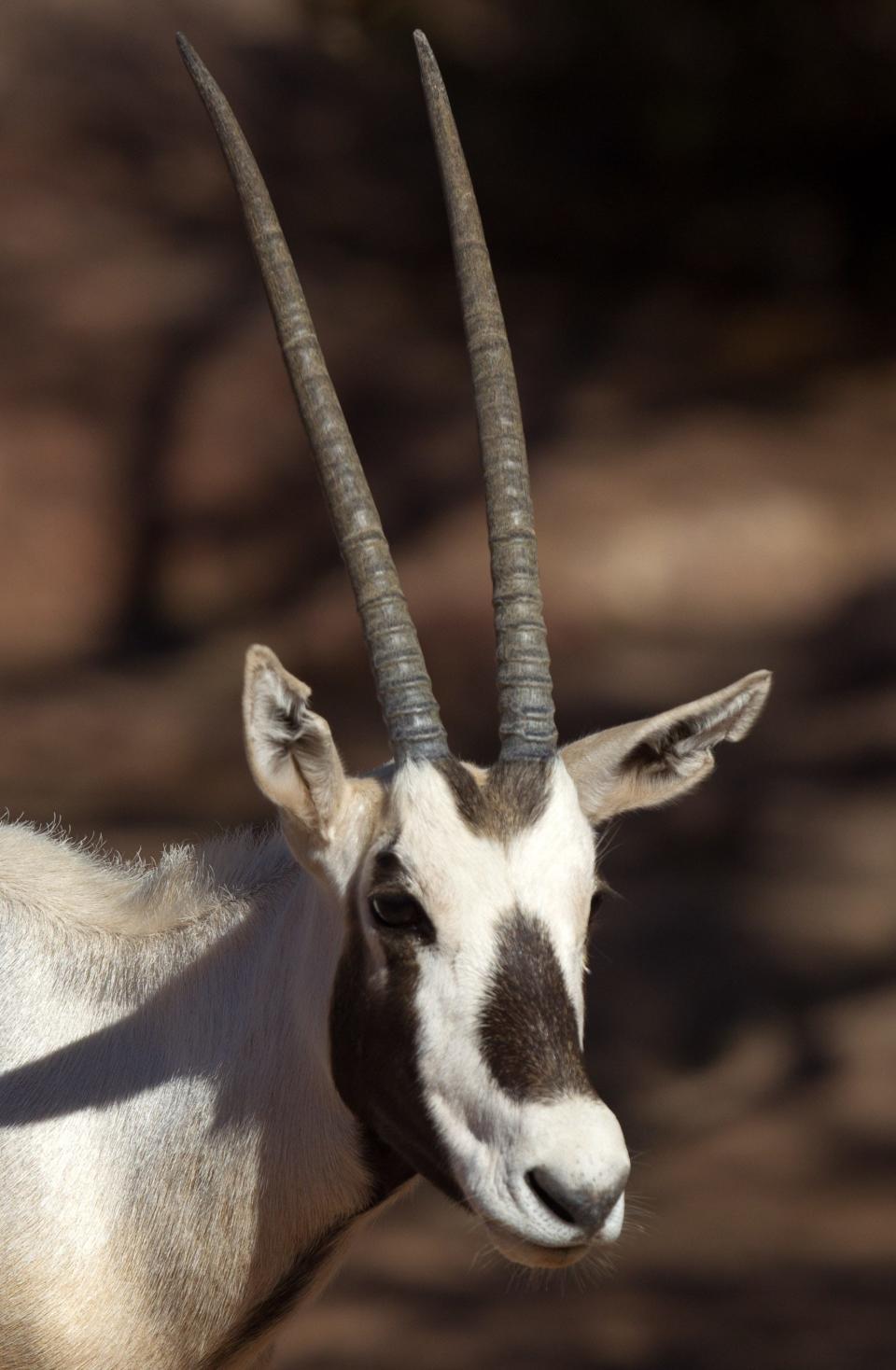
The oryx is beloved, the national animal of Jordan, Oman, Qatar, Bahrain and the United Arab Emirates. It was also coveted by hunters, who sought its meat, hide and horn.
Back in the 1960s, it had been hunted into near-oblivion. As numbers plummeted, a cohort of international ecologists intervened, searching for the right place to raise a captive herd.
They chose the Phoenix Zoo, which was still in its infancy. They hoped the oryx, used to scorching desert sands, would thrive in Arizona's arid climate.
And it did.
"At that time, there were probably around 25 Arabian oryx left on the planet," said Bert Castro, president and CEO of the Phoenix Zoo. "There are now over 8,000."
The program was such a success that the oryx was reintroduced to the Arabian Peninsula, where some 1,200 now live in the wild. The rest are in wildlife preserves and zoos across the globe.
"All those animals basically come from the mother herd that started here in the Phoenix Zoo," Castro said.
It's one of the great conservation success stories. Now, the Phoenix Zoo hopes to write another with a species that doesn't have quite the same sparkly allure as an almost-unicorn.
The janitors of nature
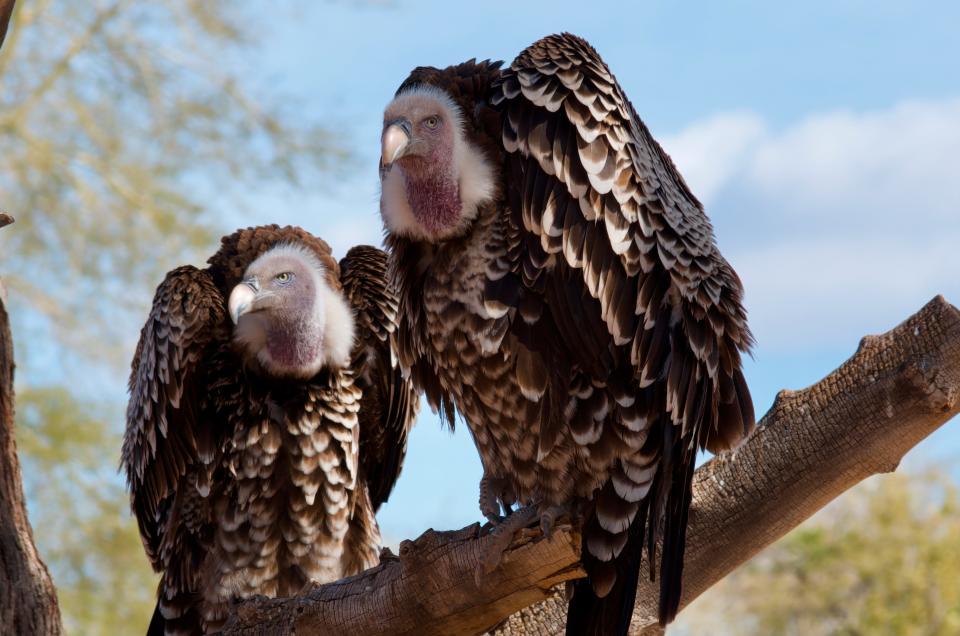
Vultures.
These bald scavengers, their names synonymous with exploitation and greed, are perhaps not obvious candidates for an act of cross-hemisphere goodwill.
But beyond their beady eyes and haughty demeanor, they have a vital status as the janitors of nature. Vultures are essential workers, whose iron stomachs and zeal for rotting meat help prevent the spread of disease.
Sometimes, they pay for it with their lives.
Their scavenging habits make them uniquely vulnerable to poisonings. These incidents can be deliberate or accidental, wrought by farmers, hunters or poachers. However they happen, they kill vultures across the world in staggering numbers.
In Africa, where poaching remains an ecological crisis, circling vultures are a telltale sign of a carcass and a clear tip to patrollers that an animal has been illegally killed. To avoid broadcasting their misdeeds, some poachers have taken to lacing carcasses with poison to bring the vultures down with devastating efficiency.
"We were in Zimbabwe about a year and a half ago," Castro said, "and there was a case where a poacher killed an elephant and laced the elephant with poison and killed over 600 vultures from that one carcass."
Among the most at risk is the Rüppell's griffon vulture, a critically endangered African species that is the highest-flying bird in the world. It has been known to soar up to 37,000 feet, a record set in 1973, when a Rüppell's vulture came off second best in a collision with a passenger plane over Ivory Coast.
A flock resides at the Phoenix Zoo, which is enthusiastically involved in Rüppell's griffon vulture conservation. More than 30 chicks have been born from its successful captive breeding program.
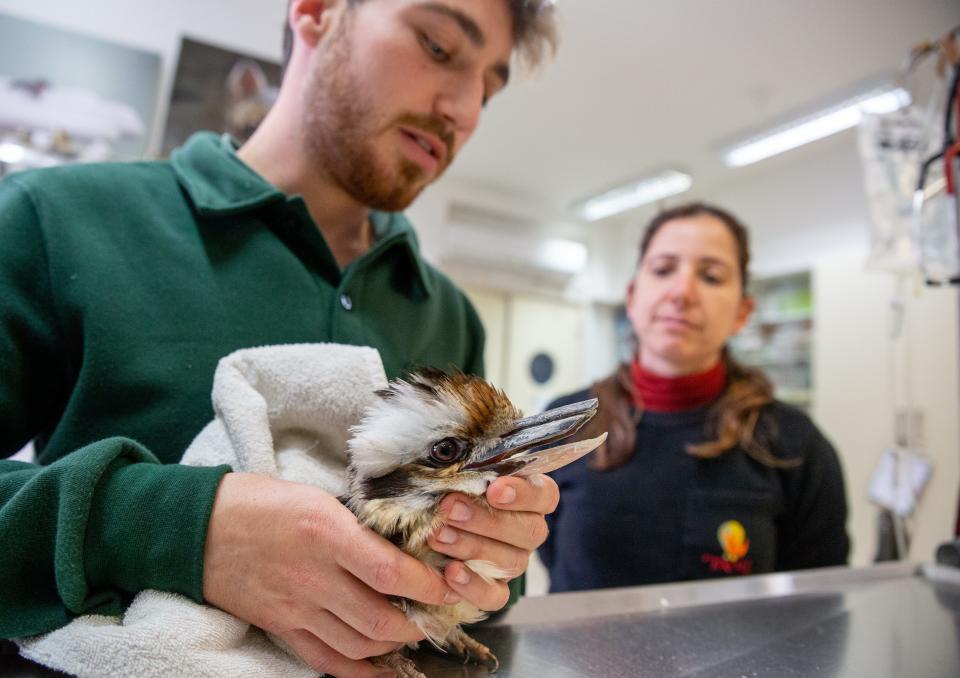
The Rüppell's vulture is a bird of the Old World, a phrase for species that originated in Europe, Asia or Africa. There are New World vultures too, with origins in the Americas, including three species that call Arizona home. Among them is the California condor.
These birds, with a wingspan that can stretch 9.5 feet, were brought back from the brink of extinction in the 1980s. Today, wild condors can be found gliding over the Grand Canyon.
But the population is still plagued by lead poisoning, caused by the birds ingesting toxic fragments left behind in the carcasses of hunted animals.
Endangered bird: Condors take flight near Grand Canyon, but lead ammo could ground the species
A global collaboration
Back in 2019, Castro, the Phoenix Zoo CEO, met a man named Oren Ben-Yosef at a conference in Argentina.
Ben-Yosef is the CEO of the Safari Ramat Gan, a sprawling zoo just east of Tel Aviv, Israel, that counts a herd of white rhinoceros among its menagerie.
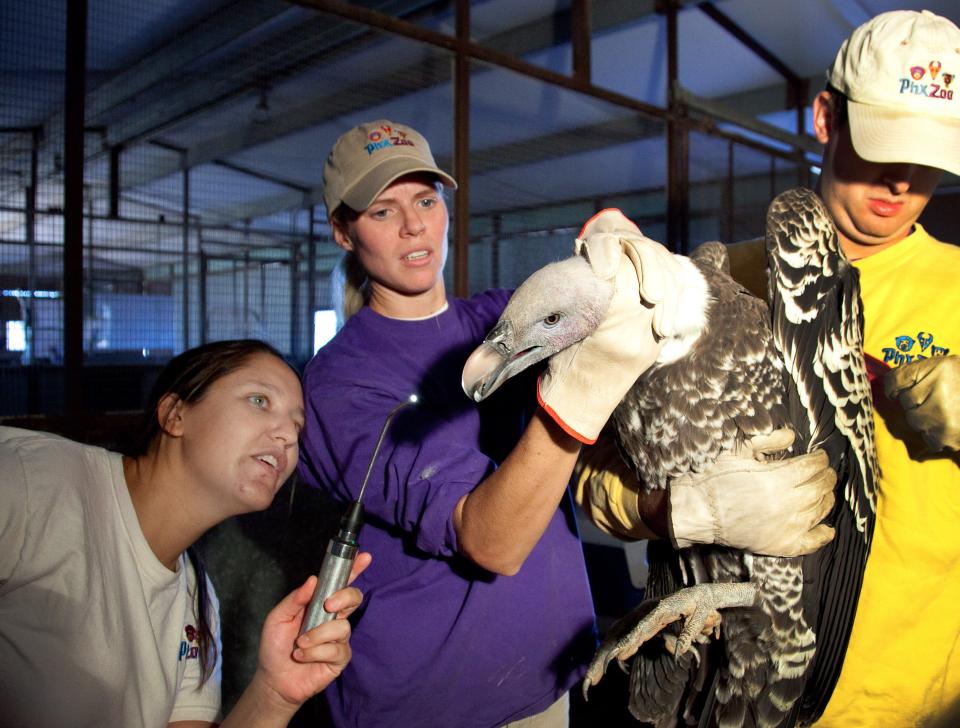
Though some 7,000 miles apart, the two zoos have a connection: Phoenix and Ramat Gan have been sister cities since 2005. Spurred on by this bond, Castro and Ben-Yosef began to talk about a potential collaboration.
It took a while to land on the right species and project. But eventually, they found common ground in vultures.
The sister city zoos work with Old World species that are close cousins: in Phoenix, the Rüppell's griffon vulture, and in Ramat Gan, the Eurasian griffon vulture.
While not in peril on a global scale, the Eurasian griffon vulture is endangered in Israel, where its numbers in the wild have dwindled to just 200.
Ben-Yosef told The Republic of frequent accidental poisonings, caused by farmers who bait livestock predators with tainted meat.
"Their goal was to hurt the predators, the coyotes or the jackals, but the vultures don't know it," Ben-Yosef said.
Two years ago, 12 Eurasian griffon vultures were brought to the Safari Ramat Gan's wildlife hospital after being poisoned in this way, he said. Only two could be saved.
With numbers on a knife edge, losing so many vultures in one fell swoop was a significant setback.
It was heightened by the fact that Eurasian griffon vultures mate for life and reproduce at the leisurely pace of one chick per year.
"It's not an economical way to grow the population," Ben-Yosef said.
It's also, he added, not simple to find a bereaved bird a new mate. "The matchmaking between the vultures is complicated."
The current vulture habitat at the Safari Ramat Gan can hold one breeding pair. Ben-Yosef wants to expand it to hold three, so the zoo can escalate its captive breeding program.
War stopped the fundraiser, but gallery went ahead
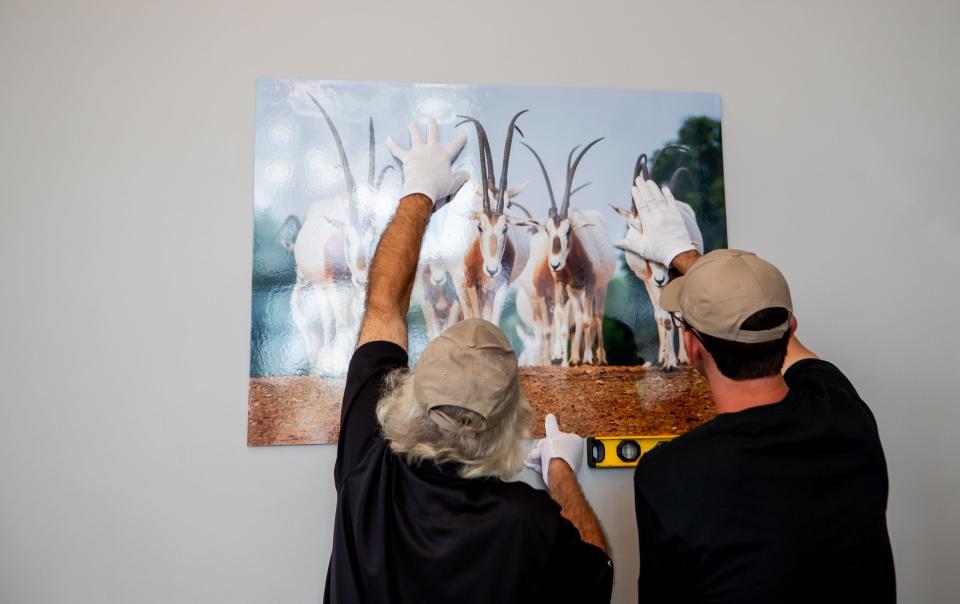
The Phoenix Zoo planned to host a fundraiser for the habitat expansion on Oct. 15.
Guests would listen to visiting staff from the Safari Ramat Gan as they discussed the vulture's plight and the care provided by the zoo's wildlife hospital.
However, the event was canceled after war broke out between Israel and Hamas, making it impossible for zoo staff to fly to Arizona. The Safari Ramat Gan has also temporarily closed.
One element of the collaboration did go ahead: a new photo exhibition, titled "The Bigger Picture." A version has been installed at each zoo.
The 60-odd images portray animals and conservation projects underway in Phoenix and Ramat Gan, highlighting points of connection between the two regions.
In Phoenix, it can be viewed at the zoo's Savanna Gallery until April 28.
Modern zoos as Noah's Ark

Both Ben-Yosef and Castro, who spoke to The Republic before the Israel-Hamas war broke out, hope the vulture project is the start of a long and fruitful conservation journey.
The 7,000 miles make it a little difficult, Castro said. But both sides are committed to making it work. "Conservation can really only be successful if you're cooperating with others," he said.
Castro said accredited zoos in the United States are essentially conservation organizations.
"We're a great place to take your family, have wholesome fun, enjoy the day, and see animals that you might not ever have an opportunity to see," he said.
"But when you look at our mission, it's all about saving those species in the wild."
Ben-Yosef likened zoos to a modern Noah's Ark, keeping species afloat from the flood of environmental damage, habitat destruction and death caused by the human race.
He said the Safari Ramat Gan and Phoenix Zoo have a mission in common: "To not just be the ark, but to educate the people to stop being the flood."
He imagines a future, he added, where there is no need to hold animals in captivity.
This article originally appeared on Arizona Republic: Phoenix Zoo teams up with Safari Ramat Gan for vulture conservation

